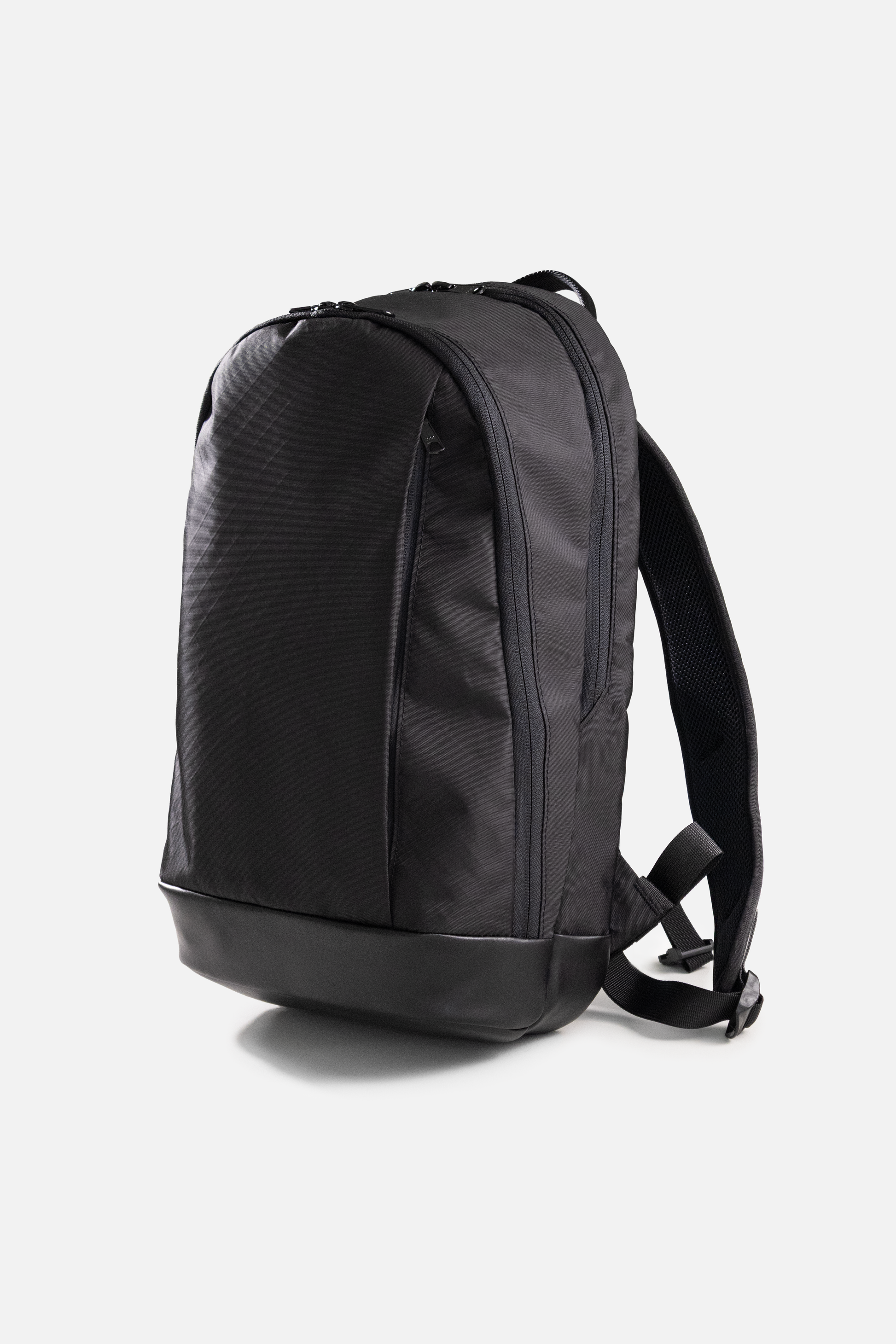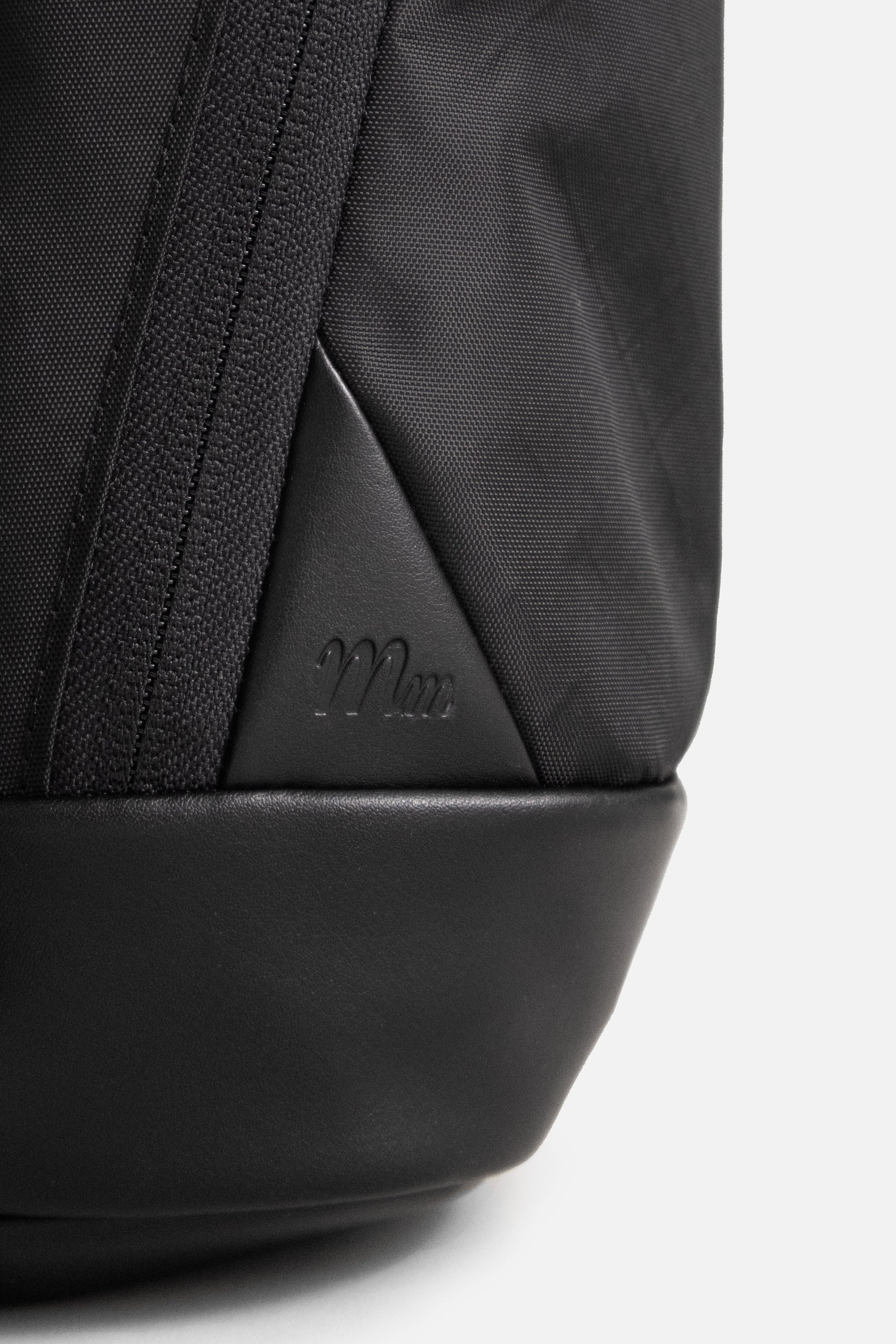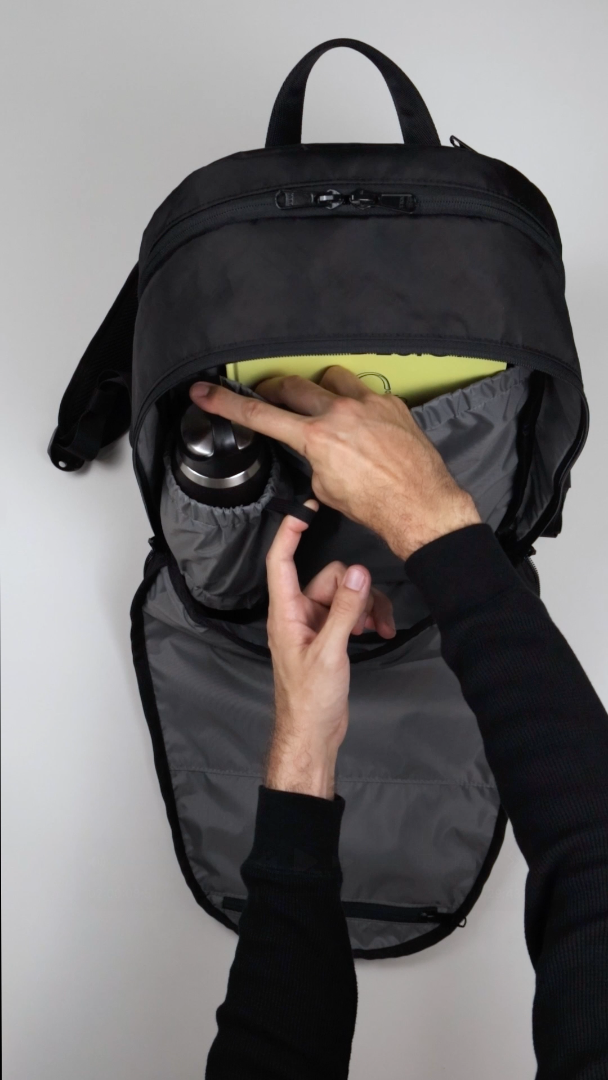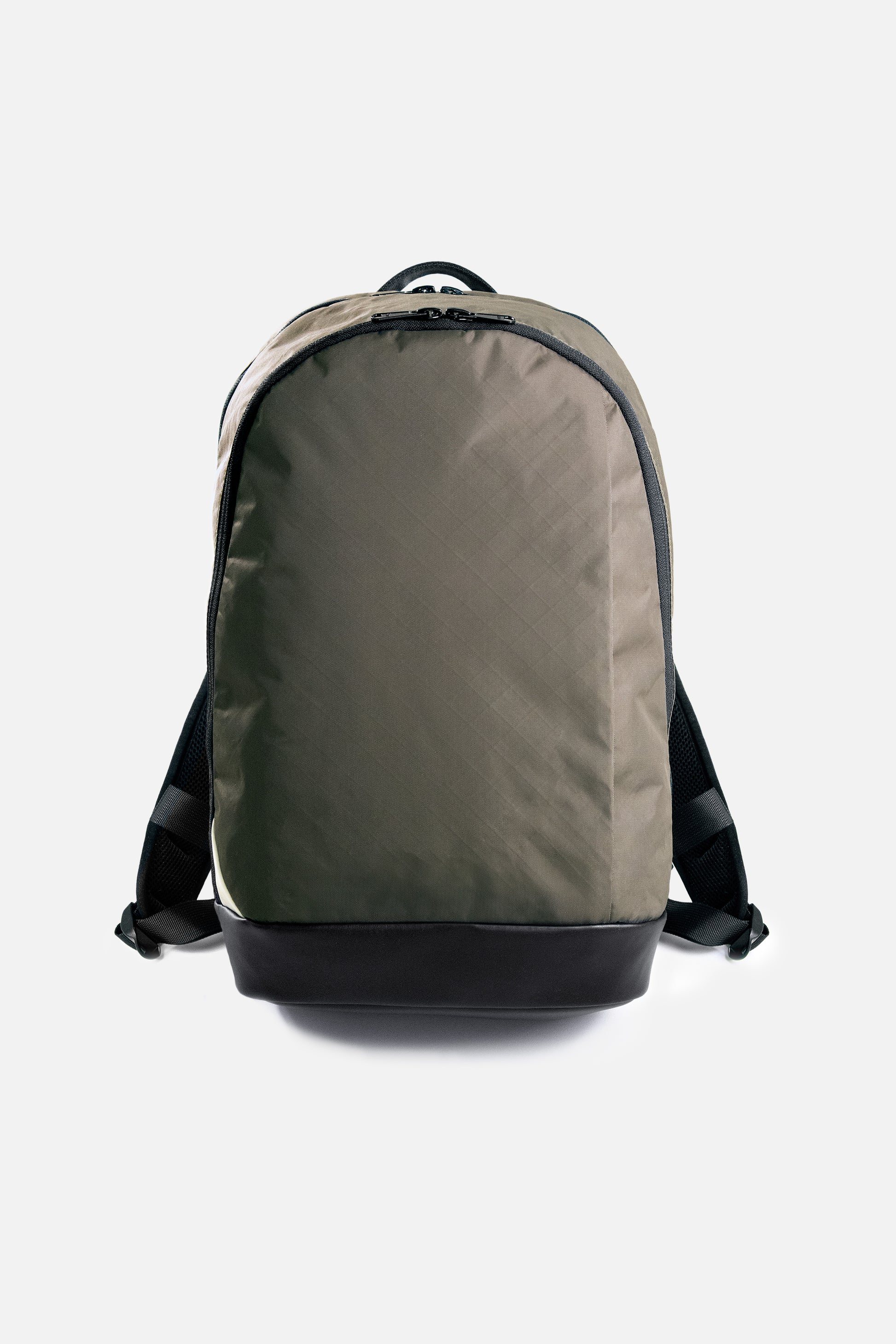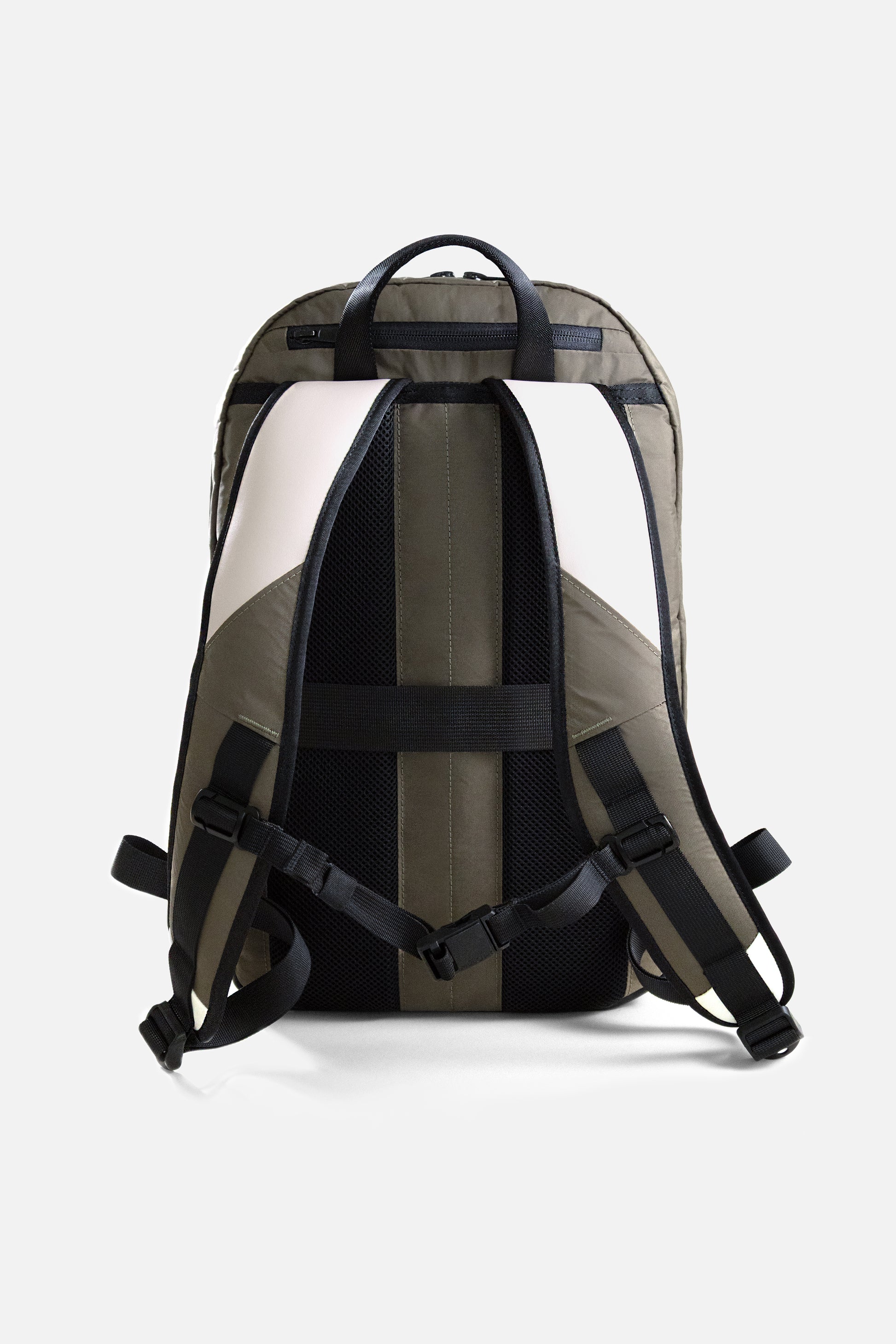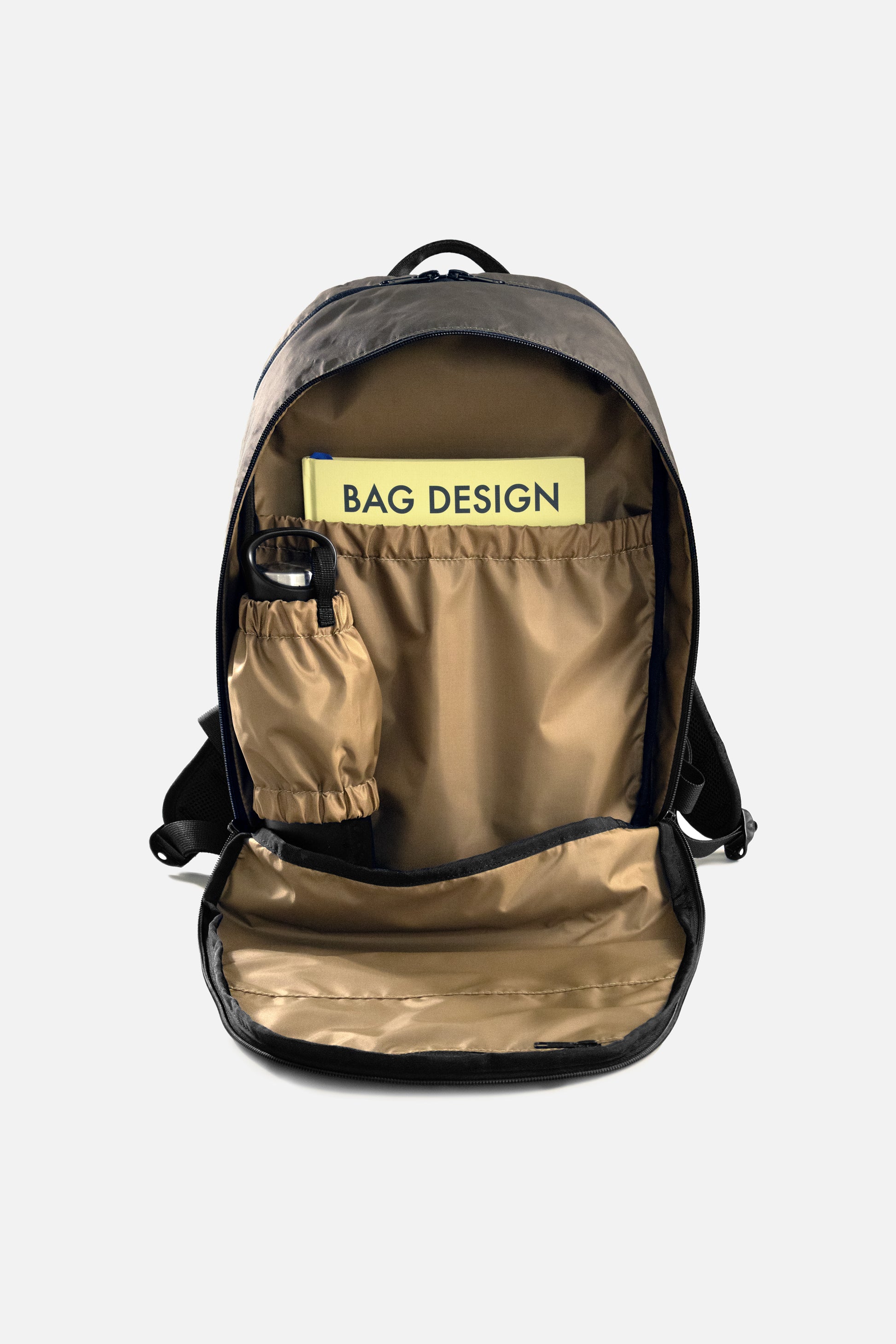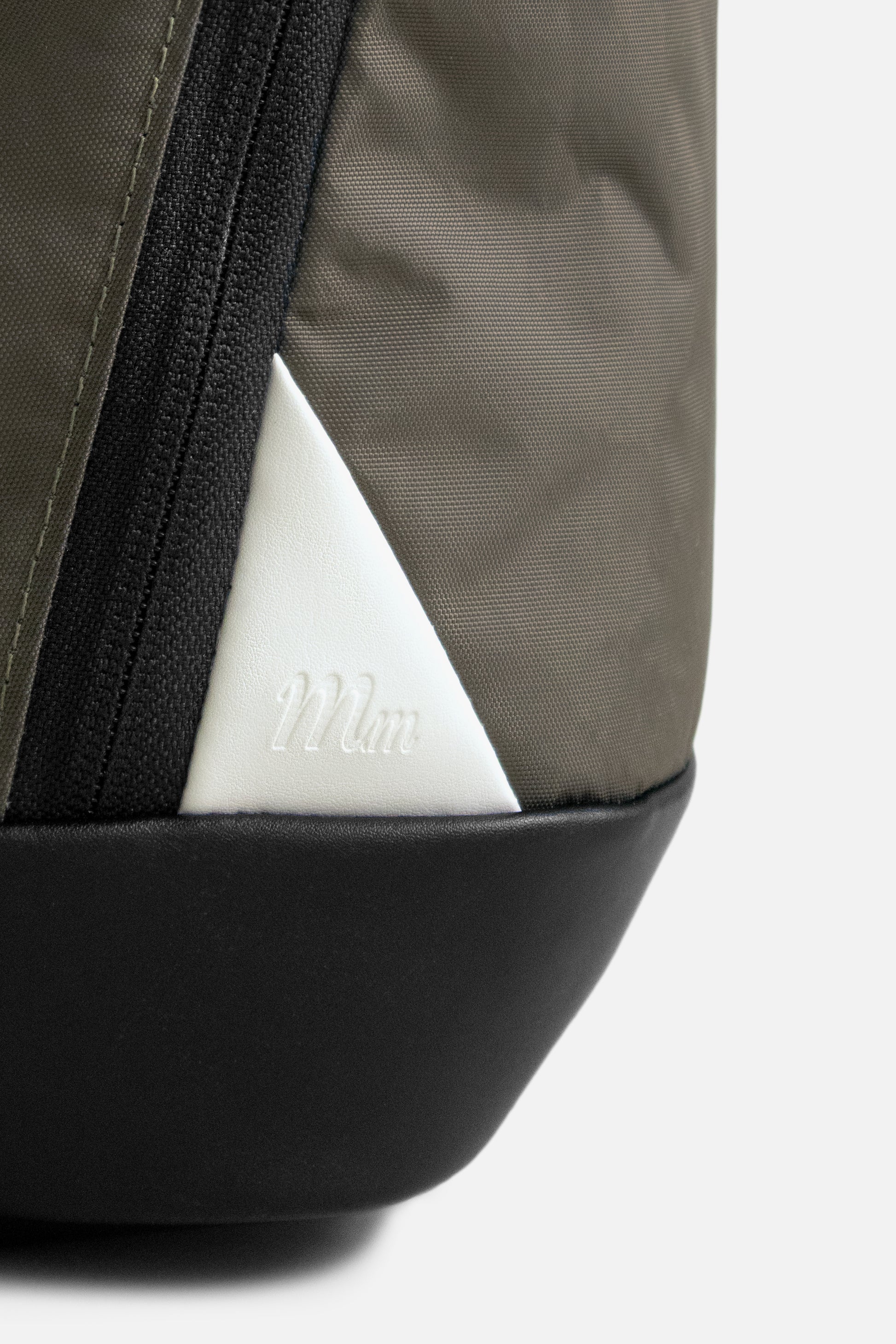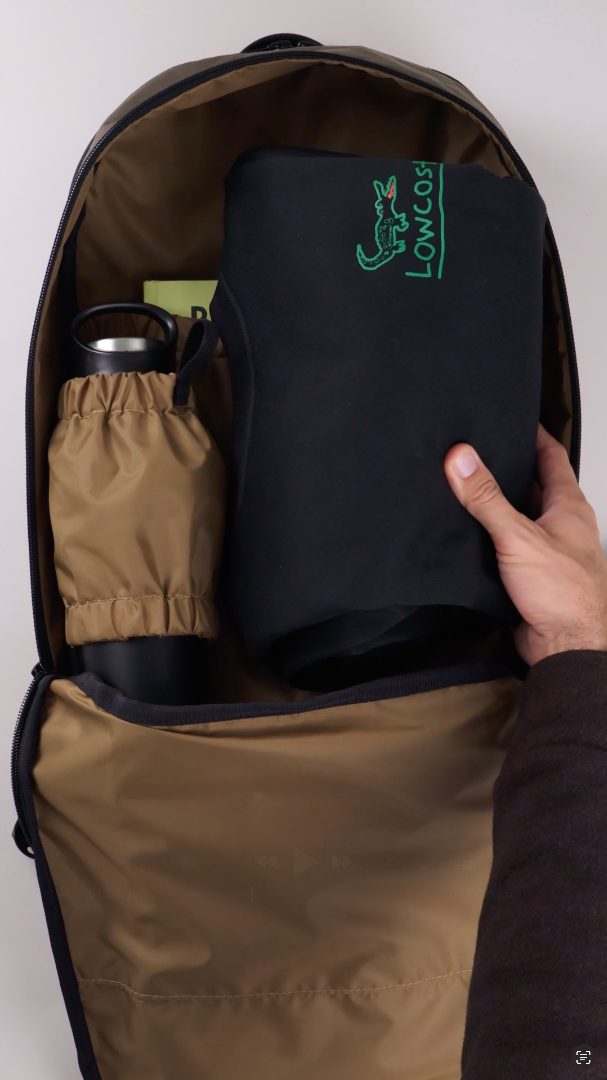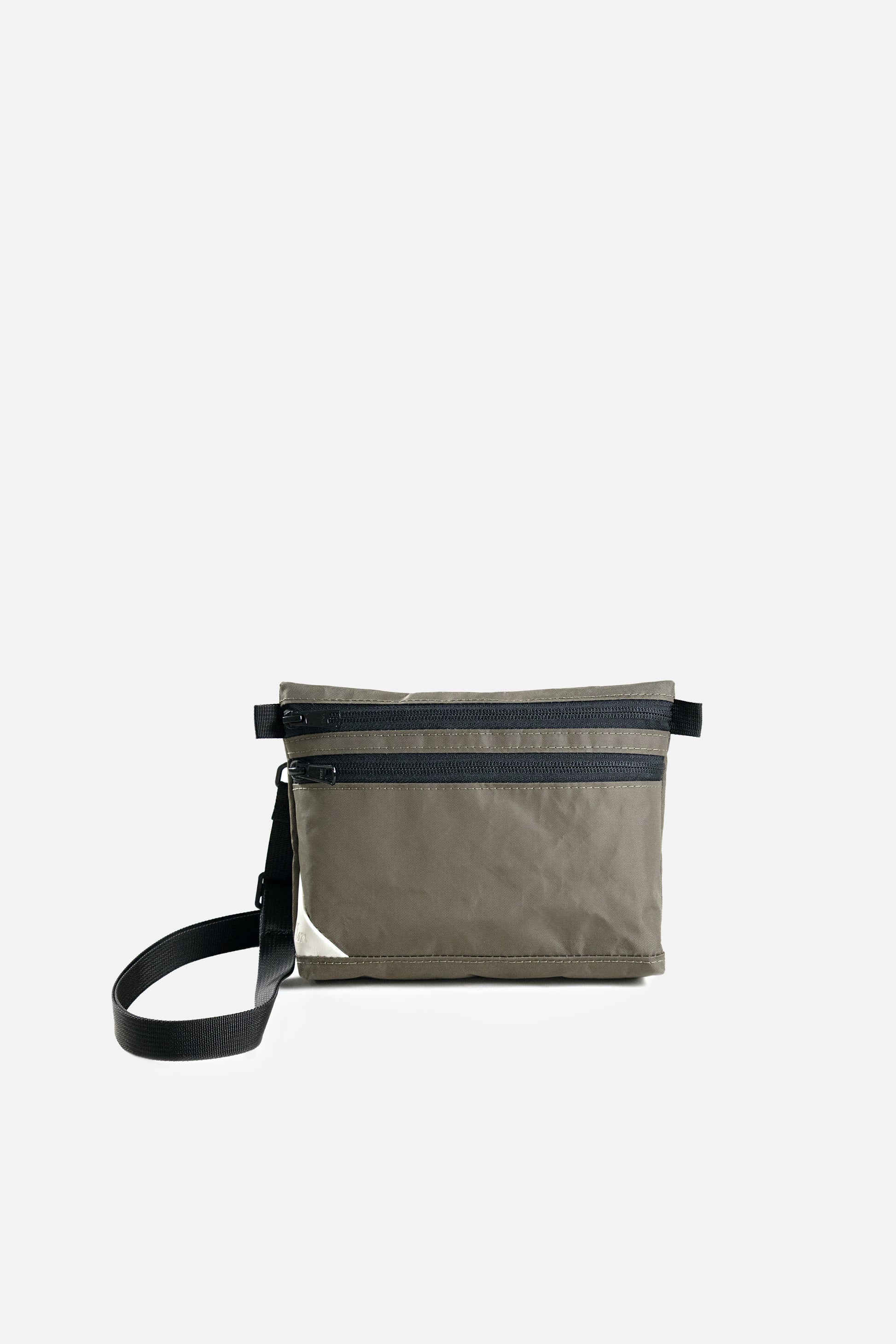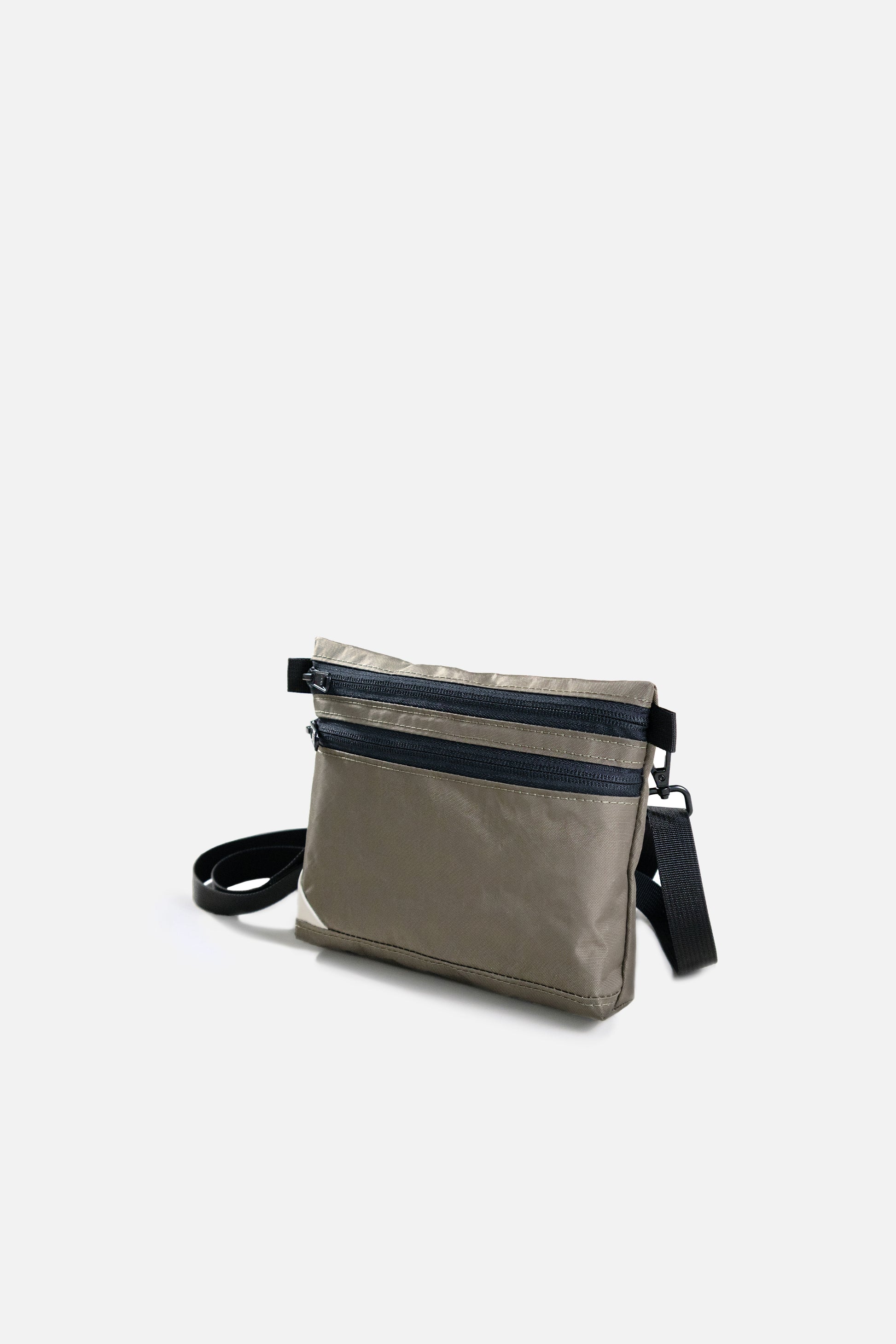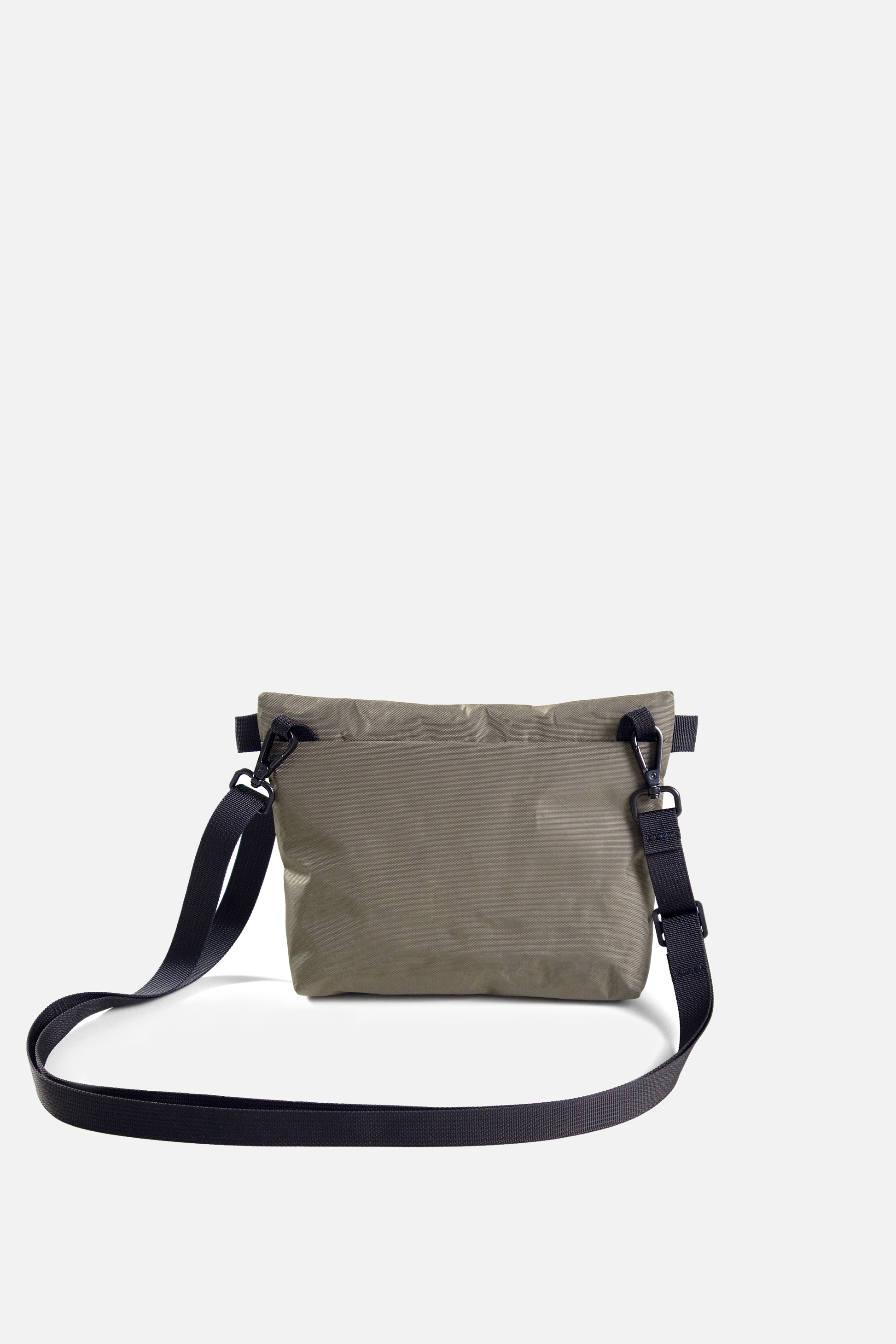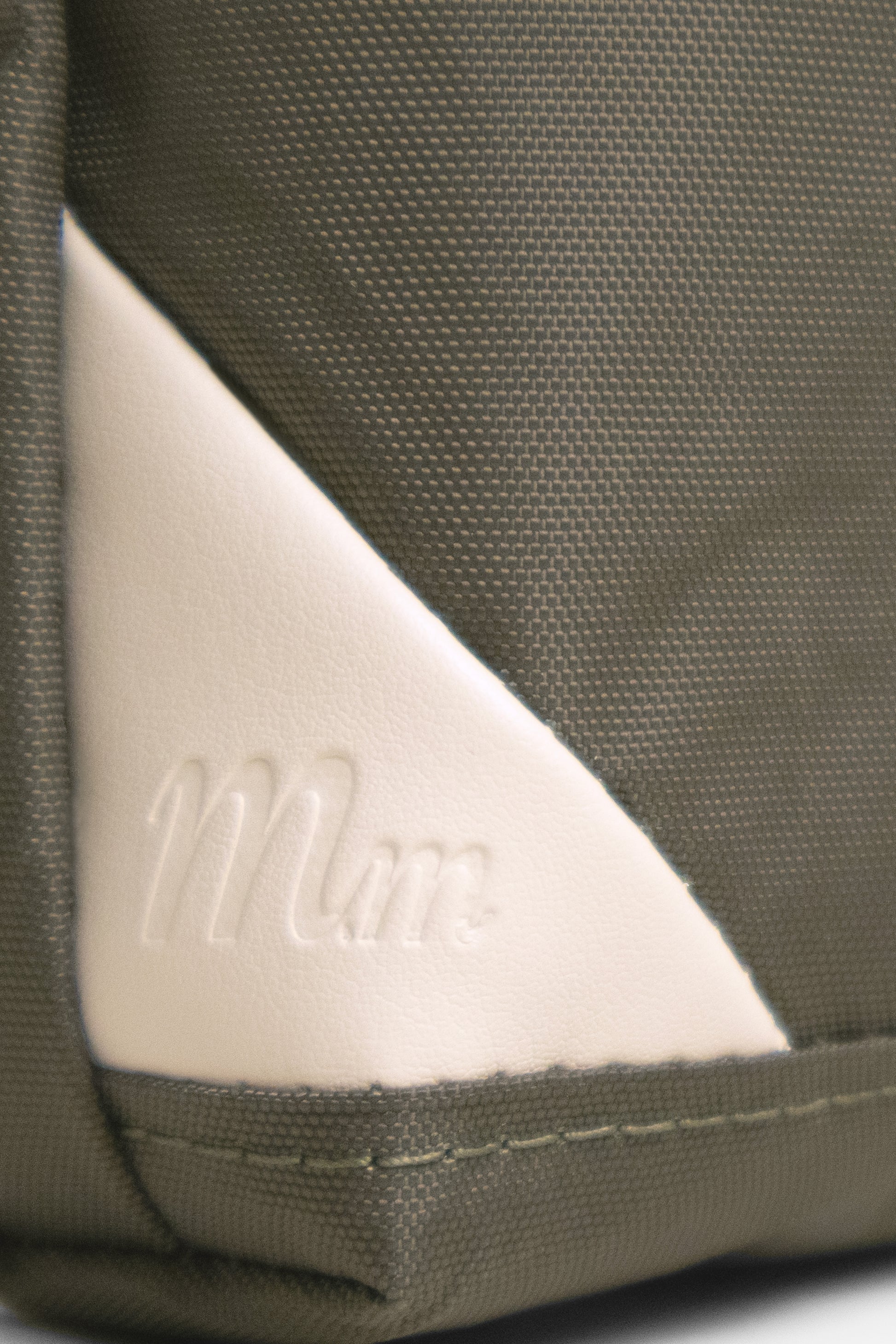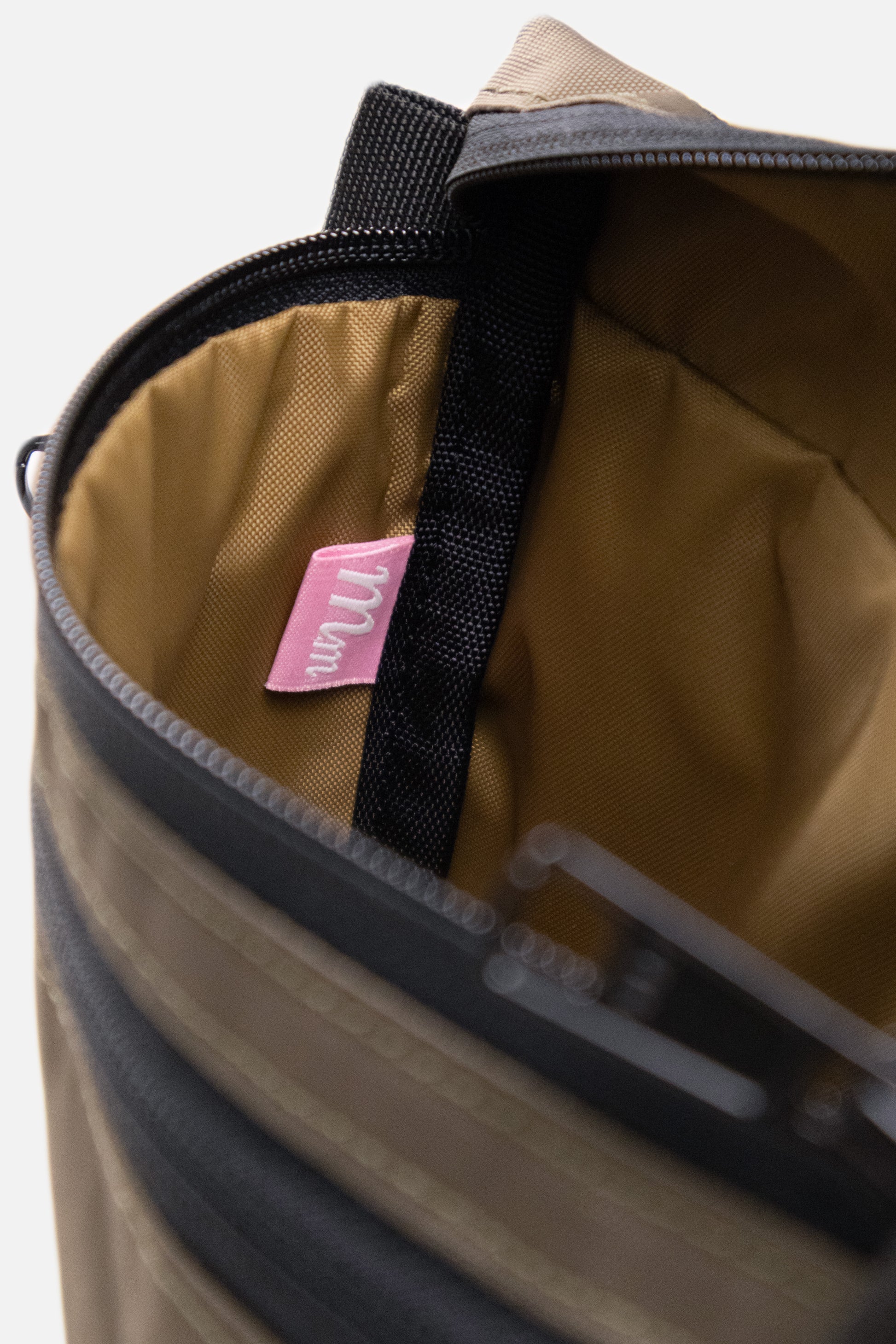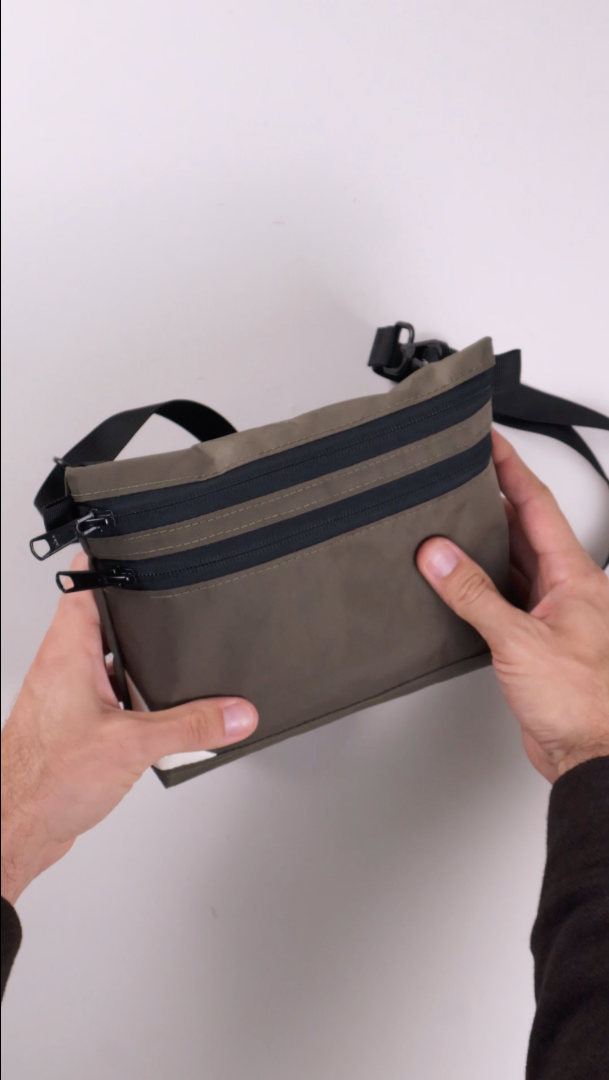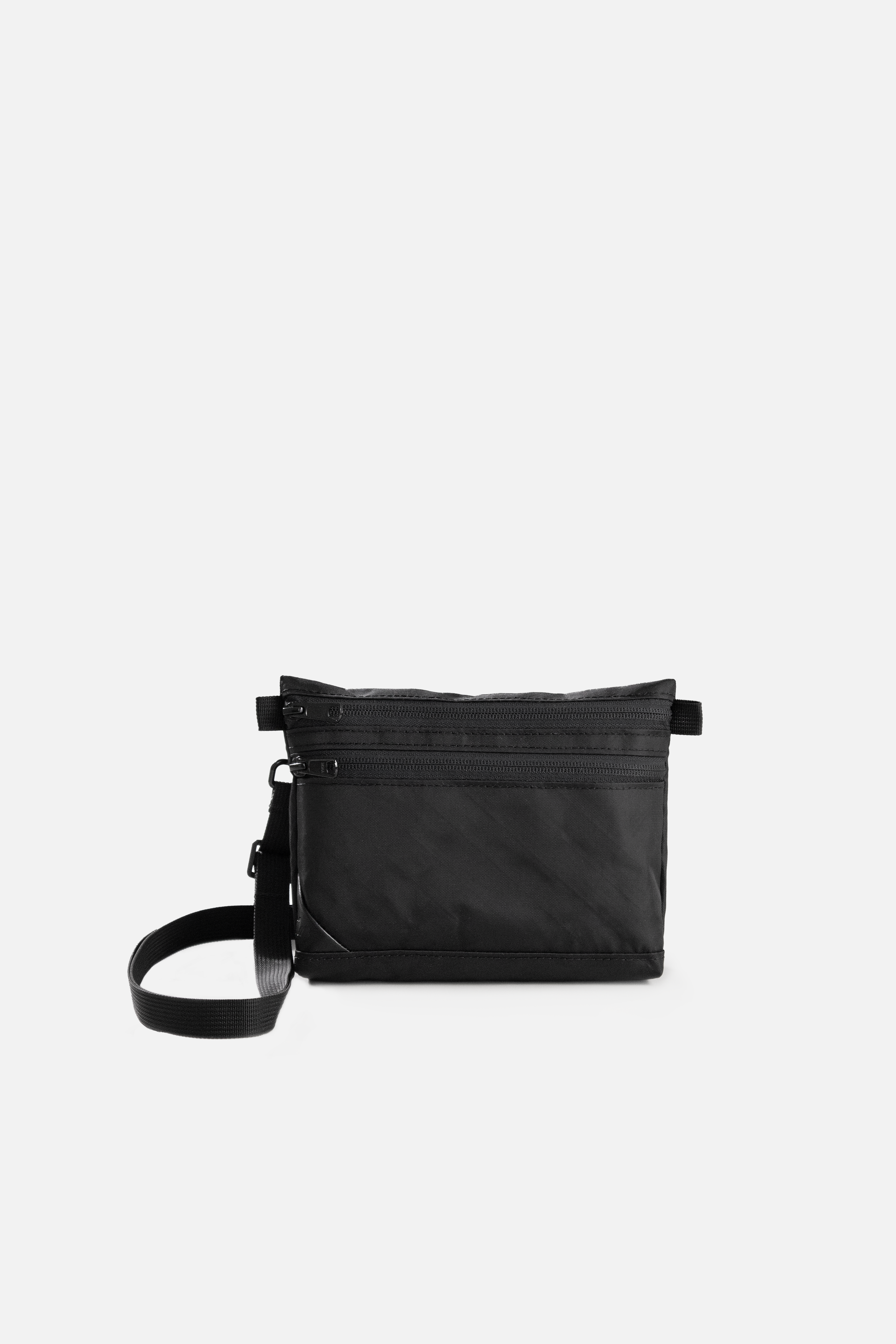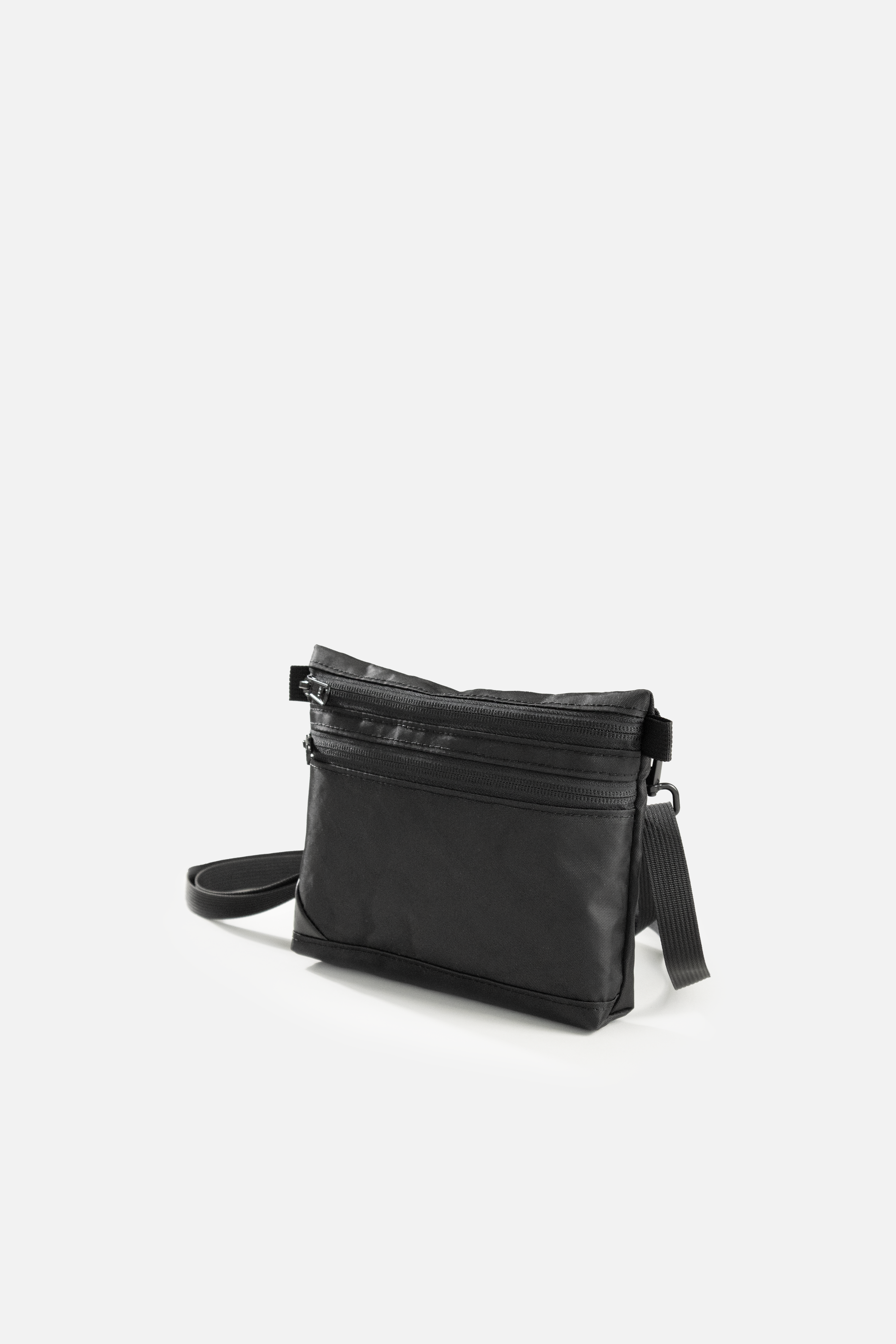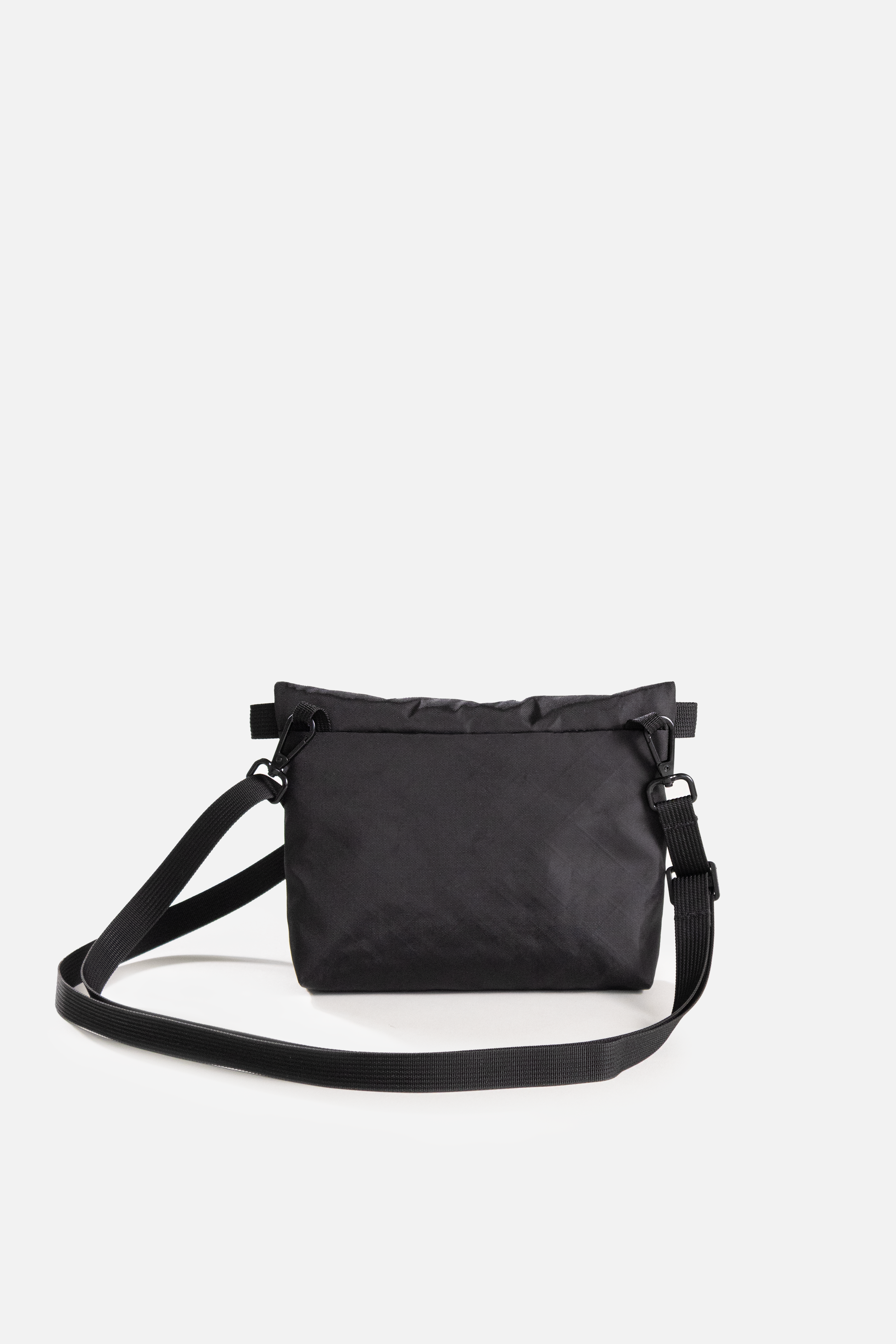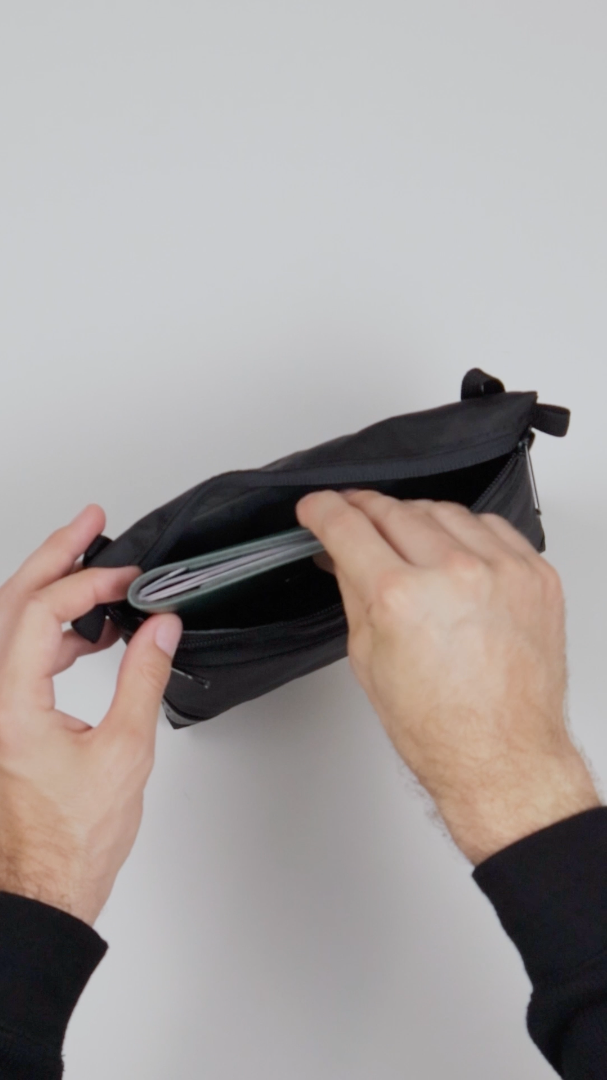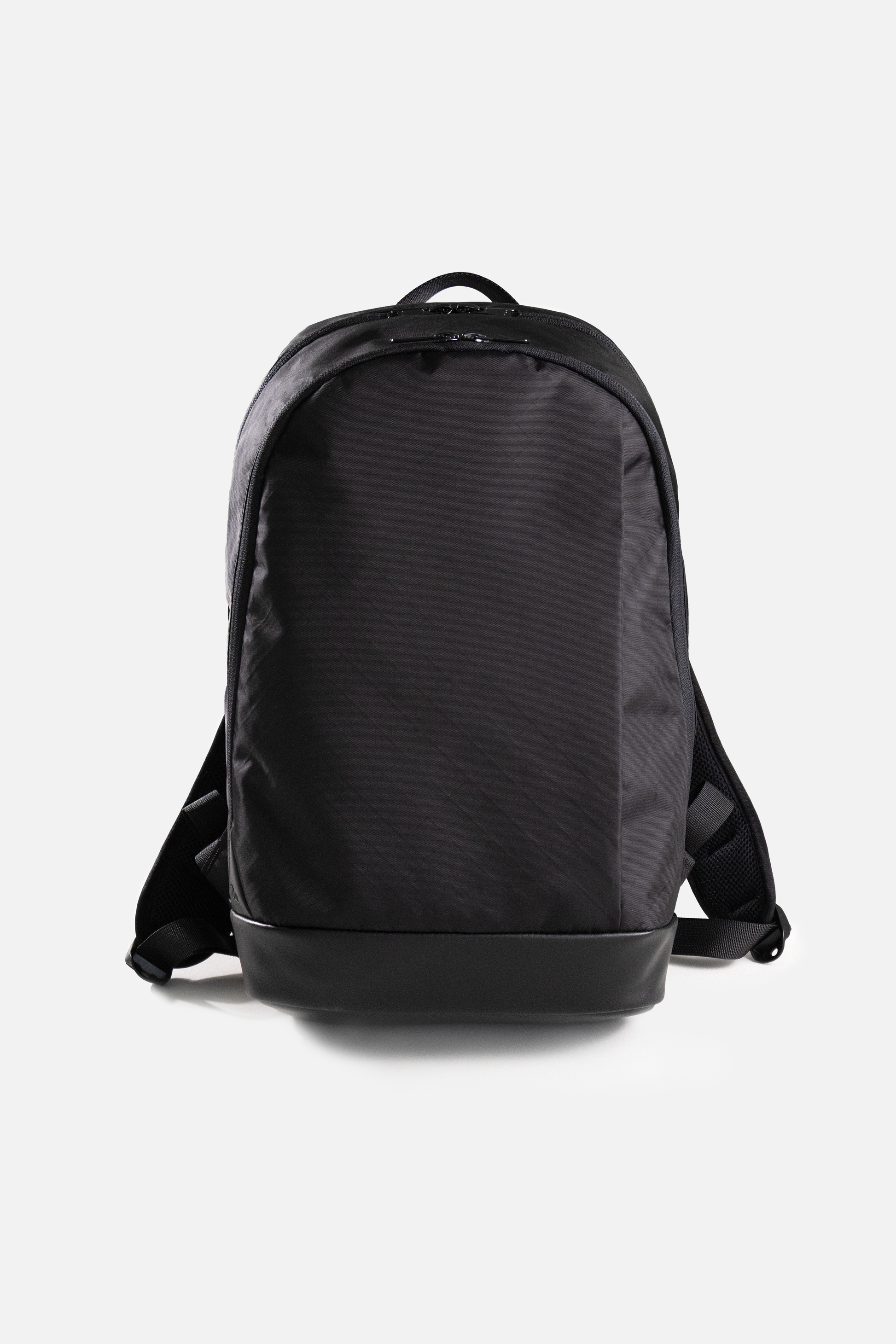
19L Roy Pack EPLX400
Originally designed as a gift for my girlfriend's father, Roy <3
The Roy Pack combines a sleek, tapered silhouette with thoughtful features and a blend of some of my favorite, premium materials.
Exterior is comprised of ECOPAK™ 400D Recycled Polyester Fabric with a 0.5 Mil Recycled Film Backing, paired with a firm Desserto® Nopal Cactus Leather bottom. There is also the option to switch to animal leather in the Base Options dropdown (surcharge due to additional labor for skiving the leather), but by default, the pack will be made with alternative leather. More info listed on the materials page for those who like to indulge in the technical specs.
Features include an internal, elasticized water bottle sleeve (pictured shows a 20 oz water bottle) along with stretch and zippered pockets in the main compartment. Dedicated laptop compartment has a fleece-lined device sleeve (sleeve fits a 14" Macbook Pro) that is suspended from the bottom of the bag, along with tech accessory-focused organization. (16" Macbook Pro fits in laptop compartment or main compartment, just does not fit the device sleeve)
Back panel has a zippered, additionally fleece-lined, quick-access pocket. Our patent pending Hella Comfy ™ harness system (joking aside it's really great) is comprised of a dual density closed cell foam on both the back panel and the shoulder straps. The back panel also features a trolly strap for roller luggage handle pass-through.
Also included is a removable sternum strap equipped with a 20mm magnetic Fidlock buckle.
Dimensions:
12" (30.5cm) Wide x 18.5" (47cm) Tall x approx. 6" (15.25cm) Deep depending how it's packed out.
Weight: 2 lbs, 4 oz (1,020 grams)
Some customization available. Please see the customization offerings below.
This item is made to order. Please allow 5-6 weeks lead time. As always, feel free to contact me with any questions about the ordering process.
Pickup currently not available
Pricing Transparency
It would never be my intention to price someone out out of accessibility to a product, or to price a product in a bracket for some type of hype marketing illusion. Labeling something as "premium" in my opinion isn't enough to justify the price. I think it's important to give context to pricing so that it's clear as to why things cost the amount they do.
Using the 19L Roy Pack as an example, the cost of materials alone is about $95 in its current offering. This can change as I'm able to source directly vs. buying some of the components 3rd party, but for now, it is what it is. Tariffs have and will also continue to affect the fluctuation of material cost.
From there, each bag from start to finish is about 12 hours of labor to build. That includes cutting material, preparing sub assemblies, and then final/closing construction. If we say that the labor is priced at $25/hr (personally, less than what I would even consider a viable living wage in Los Angeles) then the labor cost for the pack alone is $300. This is where the cost difference of goods made in the states vs. goods made by an overseas vendor comes into play. Again, not a cry for sympathy, but just providing context so that folks have more information to choose what they wish to support.
Out the gate, the Roy Pack in total costs $395 to make. In my past endeavors, those two factors (material and labor) have dictated the pricing. However, as a business, that would already be a setup for burnout. For those of us who have watched Shark Tank, the Sharks would be Sharking right now.
So that leads to the big question, "How much do you then factor in for operating costs and profit?" I've landed on the final cost at $475, which yields a profit for the brand of $80 (16.8%). This also factors in free shipping across the U.S. It's a percentage that feels justified for both parties (if you haven't noticed, I'm someone who really likes to talk about their feelings). The profit goes right back into the brand, with the goal of investing towards a larger workspace, automation for production, and absorbing high MOQ costs for ordering materials direct from the manufacturer. All of which, will eventually help bring the overall cost per unit down, which I will always be transparent about and adjust accordingly.
If you choose to support the brand and what I value, then I think it's important to have all of the information out in the open so that customers can make an informed decision that feels right to them.
Thank you for taking the time to read my ramblings, and if you have any further questions about the above, please feel free to shoot me a message on the contact page.
Vegan vs. Animal Leather Option
Personally, I do not eat meat and avoid using animal products, but this is a personal choice. I understand that this might not be the preference of everyone.
I also understand that the term "vegan leather" can come with a varying degree of preconceived notions, especially since vegan leather's origin wasn't the strongest contender in terms of durability. I can say confidently that the Desserto® Cactus leather is the best I've seen. It does not patina the same as traditional cow hide does, in fact, you won't really see any patina at all. When it comes to durability, I've done small-scale abrasion testing to see how it compares to cow hide, and I'm excited to offer something that truly feels like an equal alternative to an animal product.
I think the compromise is to have both options available and allow people the opportunity to choose. No guilt trip subtext and the markup is only because working with the cow hide involves skiving, which is more labor intensive. But aside from that, both options are on the same playing field because in my humble opinion in how they're used in the product I offer, they perform the same.
If you ever encounter any issue with either option you have purchased, please feel free to reach out on the contact page so that I can help resolve the issue :)

